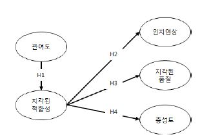
Although mega sporting events are becoming an effective means of brand communication, there has not been systematic research on involvement development and perceived fit enhancement through the sporting events. This study developed and tested a conceptual model delineating the impact of consumer involvement on perceive fit, and brand equity in mega sporting event context. Using quota sampling method, 1,847 participants (916 from IAAF; 931 from the F1) were recruited from several different cities in Korea during the mega-sporting events. Structural equation modeling were employed to examine the relationship between research constructs and test the model respectively. The study found that mega event involvement has a positive effect on perceived fit; and perceived fit influences brand equity(brand awareness, perceived quality and loyalty) toward event sponsor brands. The direct effects of involvement on sponsorship effectiveness (brand awareness, perceived quality and loyalty) did not have a significant effect on brand equity. The findings also reveal the mediating effect of perceived fit on brand equity.

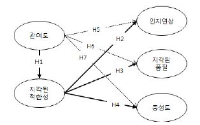
PURPOSE This study was conducted to refine and verify the argument by Berger & Pope (2011). Based on expectancy theory, we expected that the existence or type of regression discontinuity could vary depending on the situation and time in Korean Professional Basketball League. METHODS We conducted a regression discontinuity design using the R 4.3.1 package on the data of 4,531 games played during the 17 regular seasons (2006–2007 and 2022–2023) of the Korean Basketball League. We divided the sample into top-tier teams (1st and 2nd place) and mid to lower-tier teams (3rd to 10th place). Furthermore, we segregated the sample into the early phase of the regular season (1st and 2nd round) and mid to final phase of the regular season (3rd to 6th round). RESULTS First, a discontinuity of the regression was found after the third quarter. Second, the regression discontinuity appeared differently depending on the performance level. More specifically, discontinuity effects did not appear among the top teams whereas the regression discontinuity effects were identified among mid to lower-tier team samples. Third, the regression discontinuity appeared differently depending on the time point of the regular season (round). A discontinuity of regression line appears from the 3rd to 6th rounds in the Korean Professional Basketball League. CONCLUSIONS This research provides theoretical and practical contributions by systematically exploring that the probability of winning can vary even with the same score difference depending on the time point and situations perceived by the players.
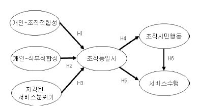
The purpose of this study is to empirically inquire into the relationship between a commercial sports center employee's person-environment fit(person-organization fit., person-job fit) & perceived service climate and organizational identification, organizational citizenship behavior and service performance through structural equation model analysis. For this purpose, this study conducted a questionnaire survey of 207 employees working at 12 commercial sports center(a facility in possession of more than 3 events). In an effort to verify the proposed structural model, this study used SPSSWIN Ver. 21.0 and AMOS 18.0. The research results are as follows: First, it was found that person-organization fit had an influence on organizational identification. Second, person-job fit was found to have an influence on organizational identification. Third perceived service climate was found not to have a positive influence on organizational identification. Fourth, organizational identification was found not to have a positive influence on organizational citizenship behavior, either. Fifth, organization identification was also found not to have a positive influence on service performance. Sixth, organizational citizen's action was found to have a positive influence on service performance.

PURPOSE This study aimed to explore methods for stimulating consumer purchasing behavior in the sportswear market, where gaining a competitive edge through traditional means has become increasingly challenging, by focusing on the recently highlighted environmental, social, and governance (ESG) management practices. The objective was to present strategic alternatives for sportswear brands grounded in sustainable management and value creation. METHODS The research employed SPSS 21.0 and AMOS 21.0 for frequency analysis, reliability and validity analysis, confirmatory factor analysis, structural equation modeling, and mediation effect analysis. RESULTS First, among the sportswear brand‘s ESG message trust and ESG authenticity, only ESG authenticity positively impacted consumer behavior. Second, both the sportswear brand‘s ESG message trust and ESG authenticity were found to positively influence ESG congruence. Third, ESG message trust and ESG authenticity negatively affected ESG skepticism. Fourth, ESG congruence positively impacted consumer behavior. Fifth, ESG skepticism was found to negatively influence consumer behavior. The mediation effect analysis yielded the following results: First, the direct effect of ESG message trust on consumer behavior was not statistically significant; however, a full mediation effect was observed through ESG congruence and skepticism. Second, the direct effect of ESG authenticity on consumer behavior was statistically significant, with a partial mediation effect through ESG congruence and skepticism. CONCLUSIONS For sportswear brands to achieve sustainable management and profit generation, it is essential to explore methods for stimulating consumer purchasing behavior based on trust and authenticity in ESG messages.

The primary purpose of the study was to identify the characteristics of Korean national youth soccer players’ functional movements. The secondary purpose was to examine whether certain tests of Functional Movement Screen (FMS) meaningfully achieve goodness-of-fit for the soccer-specific movements. Korean national youth soccer players (30 male players, 18.37 ± 0.67 yrs, 178.7±7.09 cm, 70.2±6.46 kg), performed FMS tests [deep squat (DS), hurdle step (HS), in-line lunge (IL), shoulder mobility (SM), active straight leg raise (ASLR), trunk stability push-up (TSP), and rotary stability (RS)]. The mean (±SD) FMS composite score and each test score were calculated. Rasch analysis, which was used to determine the goodness-of-fit for the tests, was applied to examine the item difficulty of the FMS tests. The mean FMS composite score was 10.2± 1.79; the mean DS, HS, IL, SM, ASLR, TSP, and RS score were 1.13±0.35, 1.27±0.45, 1.4±0.56, 1.6±0.77, 2.07±0.69, 1.43±0.82, and 1.3±0.47 respectively. According to the results of Rasch analysis, 4 tests (DS, IL, ASLR, and RS) were shown to be within the acceptable range (infit & outfit > 0.5 ~ < 1.5). The other 3 tests (HS, SM, and TSP) were shown to be out of acceptable range. The additional analysis revealed the DS (logit = 2.08) as the most difficult test and ASLR (logit = -3.16) the least. The results of the study showed that the players’ FMS composite score was lower (< 14) than the cut-off points used by previous studies for different athletes. The further study is warranted to examine the relationships between the scores of the tests appeared to be soccer-specific in the present study and the level of performance variables.


Purpose The primary purpose of this study is to show and guide how to construct a large variety of behaviors in systems dynamic for sport science. Methods By applying a simple algorithm to networked agents, which could, conceivably, offer a straightforward way out of the complexity, computational mechanism which along with its dynamics (payoff, failure, and strategy) involved. Results The model starts with the probability that systemic risk potential such as failure spreads. Even in a very random structure commonly used in sports field, propagation of the potential is guaranteed by an arbitrary network property of a set of elements. Despite the intensive systemic potential, the opposite type of potential like absence of failure could also be driven when there has been a strong investment in protection through a heuristically evolved protection level. Conclusion The implementation still needs to be polished against what happens in the real sports world, but in general, applied conceptual principle and methodological techniques behind the network-agent based mechanisms could be useful for researchers those who need to use systemes dynamic to guard in sport science.










Purpose The purpose of this study was to develop a comprehensive model for facilitating and hindering factors about girls' participation in physical activities. Methods Based on systematic analysis, 26 foreign journals published from 2005 to 2016 were comprehensively analyzed. The journals were directed to facilitating and hindering factors of girls' physical activities. A model was developed by categorizing various factors in the previous studies, and by conceptualizing those categories, and by creating visualization of relations between the categories. Results Seven facilitating factors are referred to as 'SPORTS', including ‘Self-recognition’, ‘Physical environment’, ‘Opportunities’, ‘Relationship’, ‘Treatment’, and ‘Social supports’. In contrast, nine hindering factors are conceptualized as 'INCAPABLE' which includes 'Internalized gazes’, ‘Negative feedback’, ‘Competitiveness’, ‘Alternativeness’, ‘Perceived danger’, ‘Appearance’, ‘Bad feeling’, ‘Lack of opportunities’, and ‘Effeminate norms'. Conclusions It is suggested that the girls' physical activity patterns vary depending on whether the girls subjectively interpret the physical activity or girls are being objectified by other's evaluation. And those individual, relational, and environmental levels are needed to strengthen the subjectification of girls.


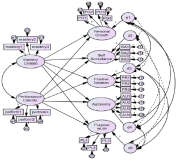
Purpose This study identified the influence of perceived motivational climate on psychological well-being in ballet majors. Methods Participants were 211(male=25, female=186) collegiate students enrolled in ballet department. Measures were The Perceived Motivational Climate in Sport Questionnaire(PMCSQ) and Psychological Well-being Questionnaire. Data were analyzed by using descriptive statistics, reliability test, correlation, and structural equation modeling. Results Results were as follows. First, mastery climate who ballet majors perceive significantly influenced on the five subscales of their psychological well-being: Mastery climate was positively related to personal growth, self-acceptance, positive relation with others, autonomy, and purpose in life. Second, performance climate who ballet majors perceive significantly influenced on the five subscales of their psychological well-being: Performance climate was negatively related to personal growth, self-acceptance, positive relation with others, autonomy, and purpose in life. Model fit indices were acceptable(RMSEA=.070). Conclusion In conclusion, this study indicated that motivational climate who ballet majors perceive was a important situational factor on their psychological well-being.

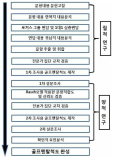
The purpose of present study is to develop the'Golf Mental Scale'that measures and assesses golf players' cognitive, emotional, behavioral response per golf mental factor experienced while competing in depth. In order to achieve this research purpose, Researcher collected raw data of golf mental question through literature review and interview with 8 members of Korean male national golf team and gathered questions per factor through Deductive-Inductive Content Analysis for the raw data. Then, Researcher conducted first and second questionnaire survey targeting 253 of elite & pro golf players and conducted Rasch Model and Confirmatory Factor Analysis for the data collected using SPSS 21.0, Winsteps Ver. 3.65 Program, AMOS 18. The conclusion reasoned out through these research process was as follows: First, golf players' psychological factor structure identified was revealed as Concentration, Self-confidence, Anxiety and Arousal control, Emotion control, Thought control. Total 37 questions were determined. Second, 5 point scale was revealed to be a good fit for Golf Mental Scale. Third, the result of Construct Validity Verification of CFA showed that Golf Mental Scale model was a good fit. Fourth, Reliability of Golf Mental Scale showed high level by recording Cronbach' α value .936. Fifth, Internal Consistency of Convergent Validity and Discriminant Validity was revealed to be satisfied. Eventually, Golf Mental Scale is expected to be used practically as a functional test tool that provides participant's response toward each situation-specific questions concretely and an objective evaluation of participant's golf mental ability per factor considering questions'level of difficulty and participants'characteristic.

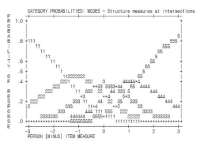
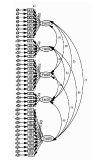
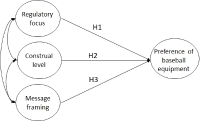
Purpose The purpose of this study was to analyze the propensity to consume the consumer of the baseball equipments who have difference of the product preference by regulatory focus, and who have construal level and suitable message framing. Methods Populations are consumers who have purchased the baseball equipments before, and the sampling groups, five different society baseball group’ league from Seoul and Kyeongi-do, were distributed, 318 copies, by convenience sampling. The questionnaire proceeded by three-way completely randomized design with stimulated sentences of four different advertisement compartmentalized by the regulatory focus, construal level and message framing. The analysis utilized SPSS 21.0 to perform the frequency analysis, manipulation check, independent t-test, two-way ANOVA, and Scheffe was used to post-hoc. Therefore, the result of this study is as below. Results First, after analyzing the distinction of the regulatory focus of the consumers of baseball equipments, the preference of the consumer who has improving focus was higher than that of consumer who has the prevention focus. Second, preference differentiation analyzed by construal level and the message framing of the consumer of the improving focus, the preference was higher when the message framing was positive, and the construal level was in short time. Third, preference differentiation analyzed by construal level and the message framing of the consumer of the prevetnion focus, there was no difference of the preference of the equipments followed by the construal level and message frame for prevention focus consumers.
